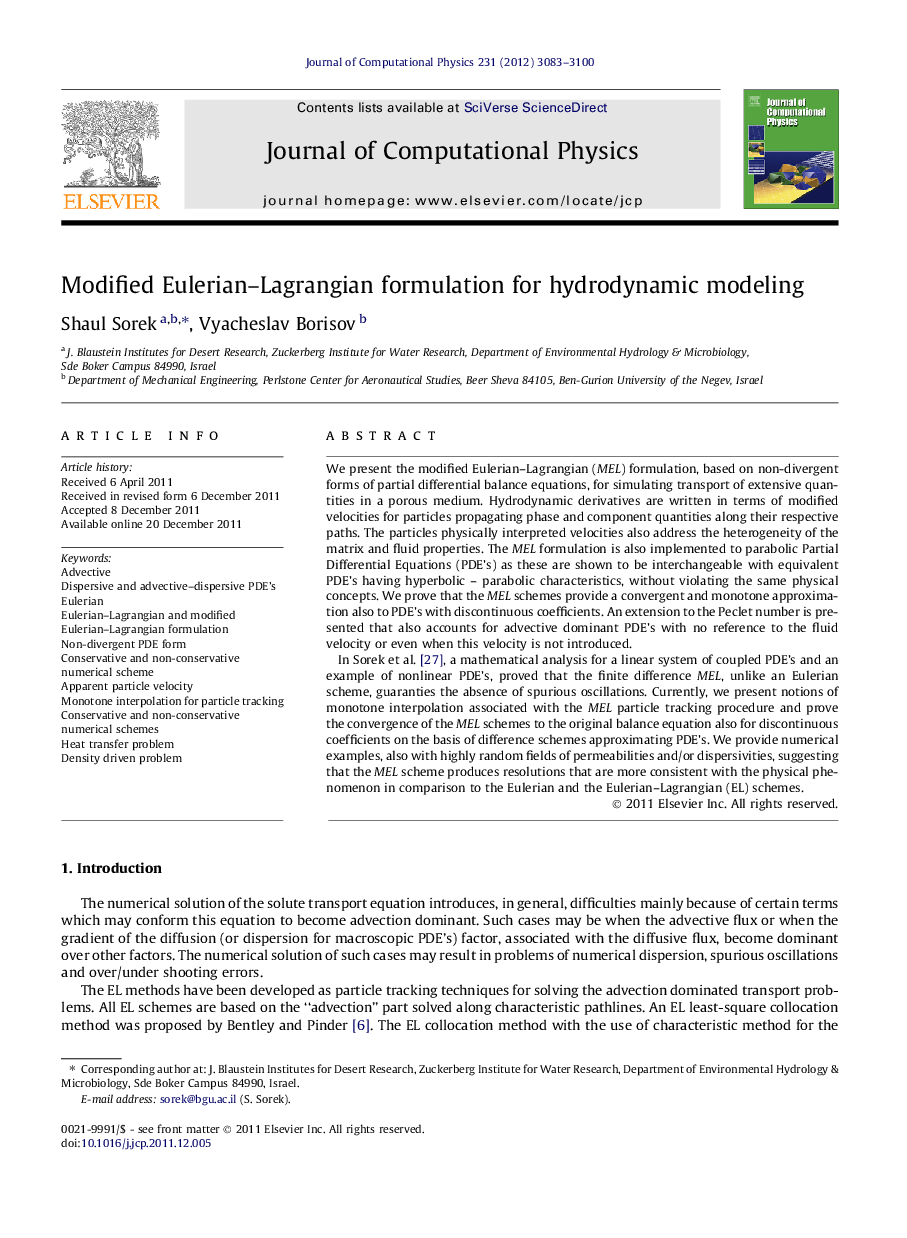| Article ID | Journal | Published Year | Pages | File Type |
|---|---|---|---|---|
| 519044 | Journal of Computational Physics | 2012 | 18 Pages |
We present the modified Eulerian–Lagrangian (MEL) formulation, based on non-divergent forms of partial differential balance equations, for simulating transport of extensive quantities in a porous medium. Hydrodynamic derivatives are written in terms of modified velocities for particles propagating phase and component quantities along their respective paths. The particles physically interpreted velocities also address the heterogeneity of the matrix and fluid properties. The MEL formulation is also implemented to parabolic Partial Differential Equations (PDE’s) as these are shown to be interchangeable with equivalent PDE’s having hyperbolic – parabolic characteristics, without violating the same physical concepts. We prove that the MEL schemes provide a convergent and monotone approximation also to PDE’s with discontinuous coefficients. An extension to the Peclet number is presented that also accounts for advective dominant PDE’s with no reference to the fluid velocity or even when this velocity is not introduced.In Sorek et al. [27], a mathematical analysis for a linear system of coupled PDE’s and an example of nonlinear PDE’s, proved that the finite difference MEL, unlike an Eulerian scheme, guaranties the absence of spurious oscillations. Currently, we present notions of monotone interpolation associated with the MEL particle tracking procedure and prove the convergence of the MEL schemes to the original balance equation also for discontinuous coefficients on the basis of difference schemes approximating PDE’s. We provide numerical examples, also with highly random fields of permeabilities and/or dispersivities, suggesting that the MEL scheme produces resolutions that are more consistent with the physical phenomenon in comparison to the Eulerian and the Eulerian–Lagrangian (EL) schemes.
